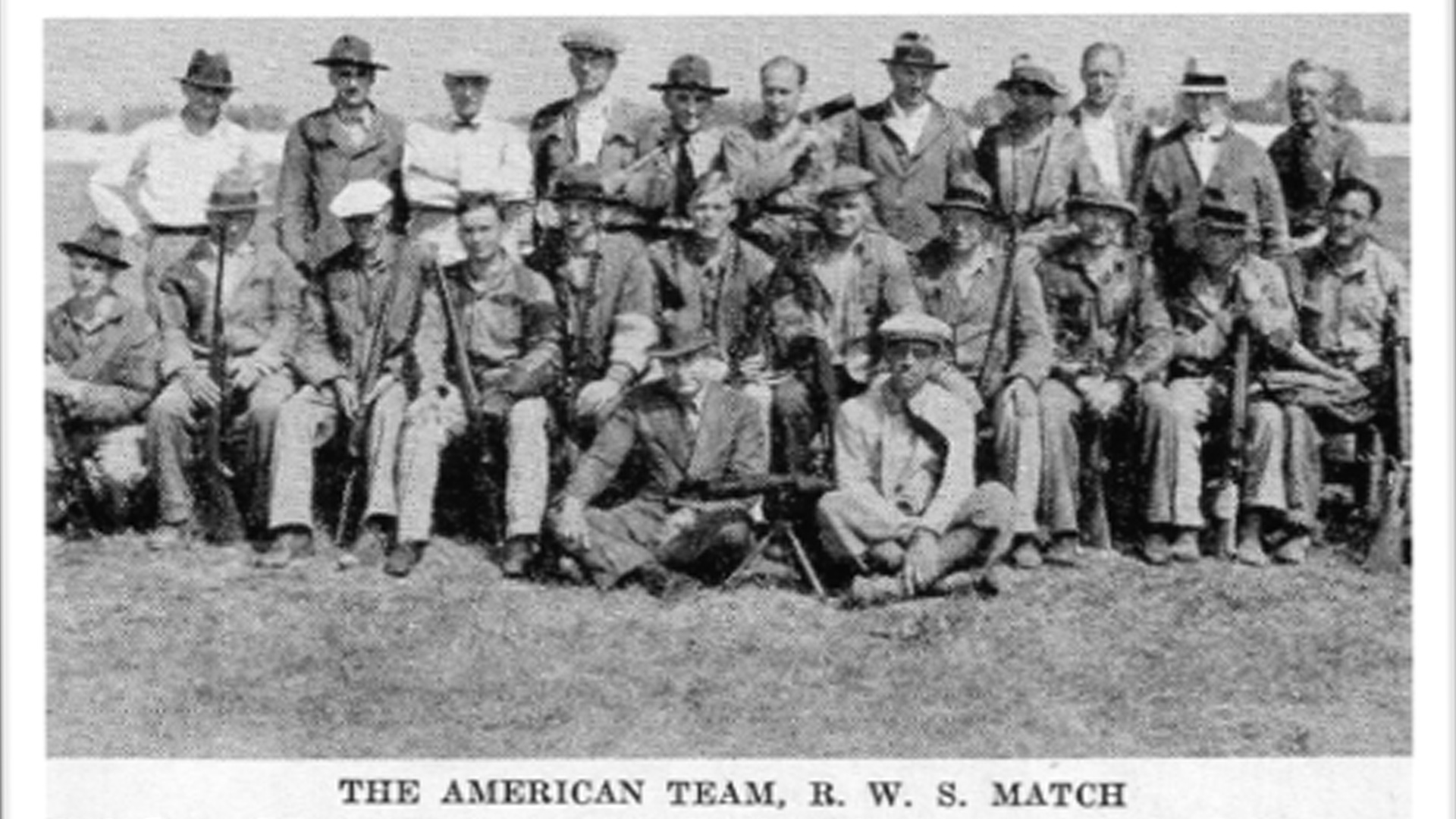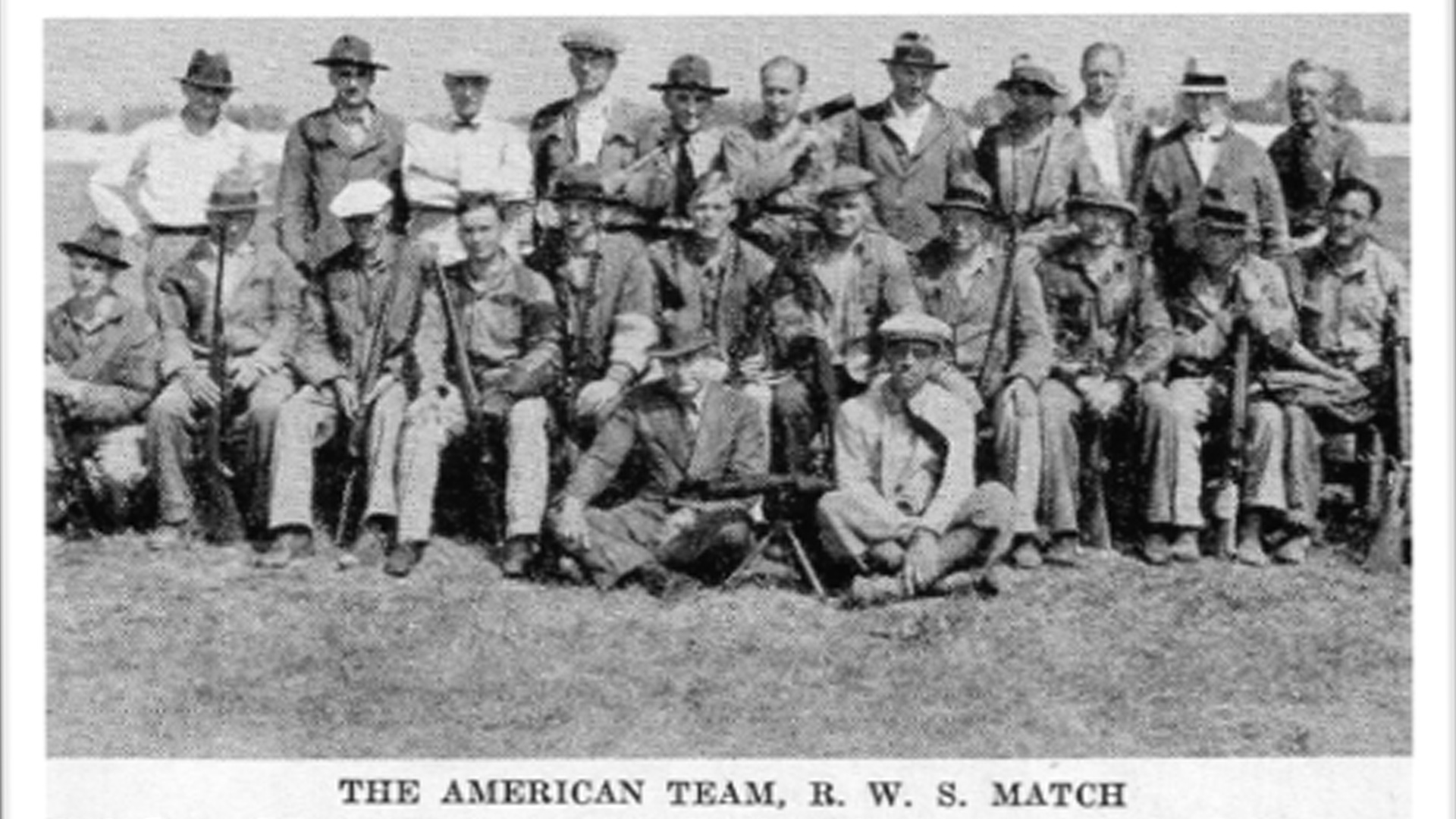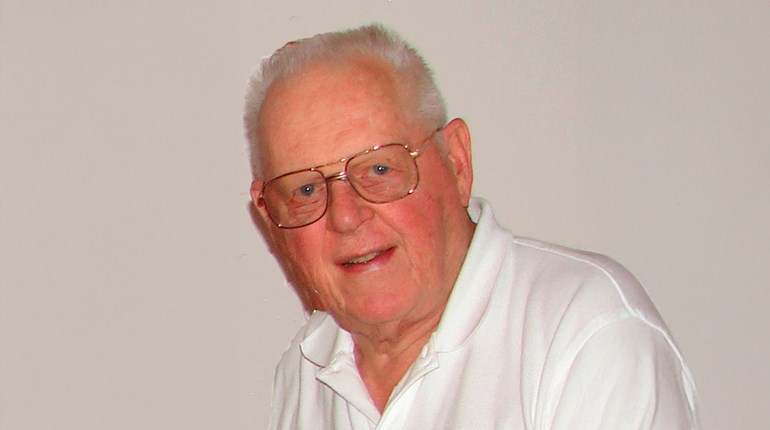
Read Part 1 of our look back at U.S. participation in the historic RWS Challenge Trophy Match.
The First RWS Match and Venues

With everything in place, the respective teams planned to shoot the match at their home ranges. The first out of the blocks were the British, who fired at Bisley, the storied home of the NRA of the United Kingdom’s Imperial Meeting, its National Championship since 1890 and the site of the shooting events of the London 1908 Olympic Games. The 10-man team posted a score of 3882 on Jul. 14, 1933. The top British team score of 396x400 was shot by A.T.O. Fogg.
A month later the Germans took to the firing line at their range complex in Wannsee, a southwestern suburb of Berlin. The complex, which hosted the shooting competitions of the Berlin 1936 Olympics, included shooting ranges up to 300 meters and a clay-target shooting facility.
Unfortunately, Wannsee’s history is not as colorful as Bisley or Camp Perry, but rather sordid. Senior Nazi officials met at Wannsee in January of 1942 to ensure the cooperation of the major German organizations in the extermination of all European Jews.
After World War II, the Wannsee shooting facility, now located in the U.S. sector of occupied Berlin, was named the Rose Range in honor of Maj. Gen. Maurice Rose. (Rose was both the highest ranking U.S. Army and Jewish officer killed by enemy action during WWII.) The shooting range was turned over to Germany in 1994, for use by the Deutsche Versuchsund Prüfanstalt für Jagdund Sportwaffen e.V., the German Experimental and Test Institute for Hunting and Sporting Firearms, a German manufacturer's association equivalent to the United States’ Sporting Arms and Ammunition Manufacturers’ Institute (SAAMI), whose mission is, “… to create and promulgate voluntary technical, performance and safety standards for commerce in firearms, ammunition and their components.”
The German team was led by the well-dressed Erich Spöerer, the reigning German Open Sight Champion. Shooting in a lounge suit, without the benefit of a glove or sheepskin padding on shoulder or elbows, he managed to fire a 398, the highest score recorded in the inaugural match of 1933. Spöerer’s efforts were to no avail, as many of the riflemen on his team did not shoot up to expectations and Germany finished third with the team aggregate a 3856.
The U.S. was the last team to shoot as it formed its team at Camp Perry in September. While not as old as Bisley, the former swamp on the south shore of Lake Erie had been the home of the National Matches since 1907 and had built up an aura all its own.
It was a long day for the five members of the RWS Team, as they had started with the Dewar at 6:30 a.m. in order to take advantage of the early morning conditions—only to come off the line facing another 40 shots, on a more difficult target—without much of a break. The team rose to the occasion, posting a winning score of 3935, with only one score out of the 390s. Virgil Z. Canfield was top gun with a score of 397.
The major munitions companies made it a habit of running full page and centerfold ads in American Rifleman magazine, touting their wares. In the magazine’s October 1933 Camp Perry wrap-up, Remington commented that the RWS Match, “… promises to become a very important and popular International Match.” Remington also proudly boasted that the top three riflemen, Canfield, Johnson and Randle, were in a three-way tie at 397 for the top score using Remington Palma Match ammunition, as did eight out of 10 RWS Team members.
Winchester was no less proud of its Model 52 target rifle and EZXS ammunition, as was Colt about its pistols and Peters and Western ammunition.
1934 RWS Match

The Germans shot in nearly ideal light conditions at 3:00 p.m. on the afternoon of Aug. 26, 1934. After a trial shoot, with five scores in the 390s, there were high hopes that this year’s match scores would better the 1933 effort. While the 3895 the team put up was great improvement over the previous year, it still did not cross the 3900 threshold, and the team was once again in third place. Bock, the GSA spark plug who initiated the RWS Match, was high shooter on the team with 394.
At Bisley, six of the British RWS riflemen broke 390, with H.S. Longhurst’s 397 the top score. Shooting at 7:00 p.m., the British 10 posted a second-place score of 3914, a major improvement over 1933’s 3882, but seemed handicapped by the setting sun’s 11 o’clock light.
Perhaps some shooters were suffering paraskevidekatriaphobia, as the match was shot on Friday the 13th. To balance that, the British used the new two bullseye target cards, which made for a more efficient match as they required only half the target changes. Maybe this innovation helped in the improved score.
United States’ Nine New Riflemen
Nearly a whole new team (only Ray Louden had shot in the 1933 event) set up to shoot the match at Camp Perry on Aug. 26. Up for a predawn breakfast, the team was on the firing line for a 6:00 a.m. start to take advantage of the morning calm. Like the British, the U.S. used the new two bullseye target cards to their advantage, as the team score improved by 36 points to 3971 and locking up another first-place finish.
Part 3 of our look back at the RWS Challenge Trophy Match will be coming soon.

Photo: The 1933 United States RWS Team.
Read more: NRA Celebrates 150 Years In 2021


































